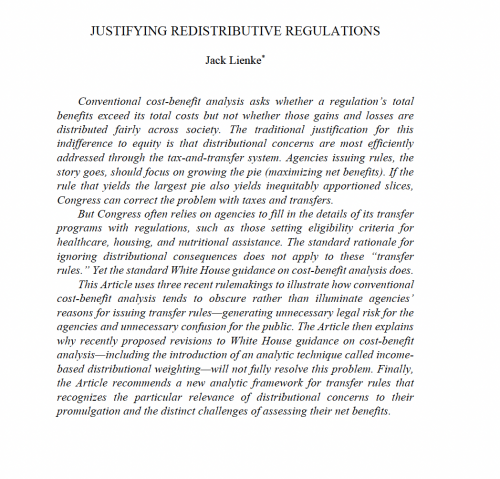Conventional cost-benefit analysis asks whether a regulation’s total benefits exceed its total costs but not whether those benefits and costs are distributed fairly across society. The traditional justification for this indifference to equity is that distributional concerns are most efficiently addressed through the tax-and-transfer system. Agencies issuing regulations, the story goes, should focus on growing the pie (i.e., increasing aggregate welfare). If the regulation that yields the largest pie also yields inequitably apportioned slices, Congress can correct the problem with taxes and transfers.
But Congress often relies on agencies to fill in the details of its transfer programs with regulations, such as those setting eligibility criteria for healthcare, housing, and nutritional assistance. The standard rationale for ignoring distributional consequences does not apply to these “transfer rules.” Yet the standard White House guidance on cost-benefit analysis does.
This Article uses three recent rulemakings to illustrate how conventional cost-benefit analysis tends to obscure rather than illuminate agencies’ (often distributional) reasons for issuing transfer rules—generating unnecessary legal risk for the agencies and unnecessary confusion for the public. The Article then explains why recently proposed revisions to White House guidance on cost-benefit analysis—including the introduction of an analytic technique called income-based distributional weighting—will not fully resolve this problem. Finally, the Article recommends a new analytic framework for transfer rules that recognizes the particular relevance of distributional concerns to their promulgation and the distinct challenges of assessing their net benefits.

